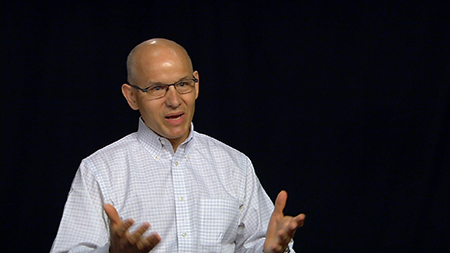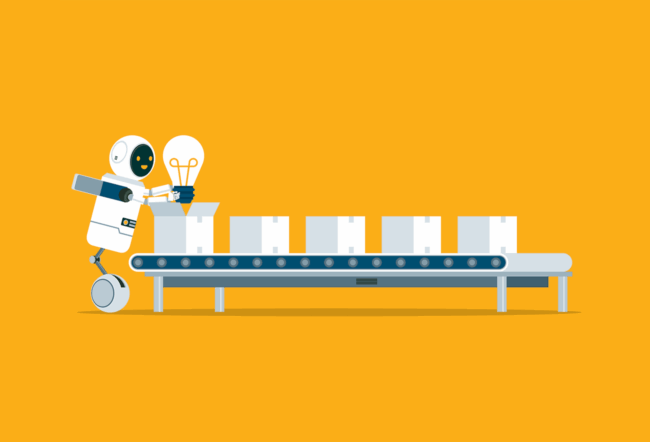Few toys have caught the imagination of children everywhere more than LEGOs — the multi-colored plastic blocks that can snap together to construct houses, castles, space ships or fantastical imaginary figures.
The Danish company (whose name roughly translates to “play well”) traces its roots to a failed carpenter named Ole Kirk Christiansen, who in 1932 decided to put his skills to work creating toys made of wood. In the late 1940s, Christiansen invested in the then-risky injection molding technology needed to make the plastic blocks. In the late 1950s, Ole Kirk’s son, Godtfred, came up with the interlocking stud-and-tube design that made the company a household name.
But there is a side to the company’s story that is rarely told, one that Wharton practice professor David Robertson says can serve as a guide to both the importance and the perils of innovation in today’s global marketplace. In his new book, Brick by Brick: How LEGO Rewrote the Rules of Innovation and Conquered the Global Toy Industry, Robertson, who wrote the book with journalist Bill Breen, recounts how a binge of innovation almost bankrupted LEGO — and how the company brought itself back from the brink by returning to its roots.
An edited transcript of the conversation follows.
Knowledge at Wharton: We’re here today with Wharton practice professor David Robertson, author of the new book, Brick by Brick: How LEGO Rewrote the Rules of Innovation and Conquered the Global Toy Industry. David, thanks for being with us today.
David Robertson: Thanks for having me.
Knowledge at Wharton: I had a chance to read the book. The story of LEGO’s transition from a small company that made wooden toys to a worldwide giant is pretty interesting. Could you briefly discuss its origins?
Robertson: Sure. It [started with] a failed carpenter in 1932. Denmark was in the midst of a recession like much of the world, and a carpenter named Ole Kirk Christiansen was having trouble getting the wood he needed to make furniture. So he took scraps of wood and made toys for kids, which actually did pretty well. He turned that into a business and started LEGO in 1932.
Knowledge at Wharton: Where did the iconic brick come from? How did he go from wooden toys to the plastic blocks that we all identify with LEGO?
Robertson: [Christiansen] made wooden toys for the first 15 years of the business. He has four young sons. His wife dies a year or two after he starts the business. He continues to grow and do well. And then in 1947, against the wishes of his now grown sons, he invests in this really risky technology called plastic injection molding and starts making plastic toys, which initially do pretty badly.
There are a lot of department stores who tell him that kids will never want toys made out of this cheap plastic stuff, that wooden toys are what kids will always want. But Christiansen experiments with different types of plastic toys. He builds some stackable, although not really interlocking, bricks, and then passes control of the company to his son, Godtfred Kirk Christiansen, who experiments with different configurations and finally comes up with the interlocking brick with the studs and tubes, and patents that in 1958.
Along the way, Godtfred does something really interesting: He is talking to a department store owner from the major department store in Denmark, and the guy tells him, “What we need is not another toy, but a system of play. Something where if you buy a second set, you don’t add to your toys, you multiply what’s possible — these things can interlock and you can do more, much more. And as you buy more sets, the opportunities multiply.”
Godtfred Kirk Christiansen goes back and looks at all the different products that LEGO is offering. He realizes that 90% of them don’t fall in this category of a system of play, and that it is really only these stackable bricks that do. He makes a pretty big strategic decision to actually cut out 90% of his product inventory and focus on the brick. That’s a big move, but it turned out to be pretty successful.
Knowledge at Wharton: I was really struck by how innovative it was for LEGO to create a system such that, if you buy a package of bricks, it fits with all of your other bricks, and it doesn’t matter if you’re combining pieces from a space set with pieces from a castle set, for example. What are some of the key decisions that LEGO leadership made in the company’s early years?
Robertson: One of the early decisions that really made a huge difference was the development of the minifigure. Back in 1978, the first of these little LEGO people came out, and that really took the whole idea of a system of play to a new level. I have a picture in the book of three different, really popular sets from the mid-1970s. One is a family, and they stand about 10 bricks tall. Next to them is a train, which stands about eight bricks tall. There’s no way the family could fit in the train. And then next to them is a house, which stands about five or six bricks tall. So the family towers over the house, like some 1950s monster movie. [LEGO introduced] some good toys in the 1970s, but they weren’t at the same scale at all.
When LEGO comes out with the minifigure, they standardize all of the sets around that scale. They make the system of play even more of a system. That’s when things really start to take off for the company. From 1978 through 1993, the company grew at 14% per year, every year, for 15 years, basically doubling in size every five years for 15 years. It’s kind of a golden period in LEGO’s history, where the company expanded into North America and other geographies. They explored different types of sets. They introduced theme sets around space, castles, pirates and Westerns. And everything worked for about 15 years.
Knowledge at Wharton: LEGO went through a decline in the 1990s and the 2000s. There are plenty of stories out there about companies that responded too late to changes that would significantly impact their business or how their customers lived. Is that what happened with LEGO, or was there something different going on?
Robertson: There were two phases in that decline, and one led to the other. The first one was from 1993 to 1998; LEGO went through this stagnant period where really it had reached the end of a natural growth cycle. There are only so many feet of toy space and so many toy stores around the world, and LEGO was on those shelves already….
LEGO tried to keep the growth going by tripling the number of new toys that it offered between 1993 and 1998, but sales didn’t go anywhere. Cost, on the other hand — as you can imagine, if you triple your number of products without changing your sales, your costs go up, your profits go down and LEGO suffered the first loss in company history in 1998. So the company laid off 1,000 people. The grandson of the founder, Kjeld Kirk Kristiansen [son of Godtfred and grandson of Ole Kirk Christiansen; Kristiansen’s last name was misspelled with a “k” instead of a “ch” on his birth certificate], who has now been leading the company for 20 years, steps aside. He says, “Maybe I’m not the right person to lead this company in the next generation.”
He brings in a turnaround expert, and that guy finishes the layoff. His name is Poul Plougmann, and he realizes that LEGO is actually operating in a very different world than it was just 10 years before. He goes out and he starts looking at the market and finds that kids are getting older [at a] younger [age], that the whole market for toys has changed with companies like Toys R Us and Walmart being much more sophisticated, much more powerful, in terms of their market power. Lastly, a lot of other toys had switched their production to China, and so their toys, the other toys you could buy for your kids [besides LEGOs], were getting cheaper. On the other hand, the Danish kroner had increased in value against the dollar, and LEGOs were still being made in Denmark. So LEGOs were getting more expensive while other toys were getting less expensive, kind of a double hit. The company realized that it really needed to do something different. And that’s when they embarked on this experiment with innovation.
Knowledge at Wharton: When the company begins its push for innovation, it introduces a lot of what sounds like “can’t miss” products, including collaborations with the creators of Star Wars and the Harry Potter books. There was also some really innovative work going on that involved computerizing LEGO’s trademark blocks and putting them into a virtual world. But the company still finds itself in deep financial trouble — why is that? What was leadership missing when they were embarking on this campaign of innovation? Do you think they could have seen the problems if they had been paying attention to different things?
Robertson: The short answer to that question is that they lost control of the innovation. They tried to innovate in lots of different ways, and they did. They came out with a lot of different toys. Some of those toys were hits like LEGO Star Wars, LEGO Harry Potter and Bionicle. There were a couple of really big hits, and in a way, those were really dangerous for LEGO because [they created] a thick layer of cosmetics that hid a pretty ugly business underneath.
There was a toy called Explore that was a line of toys for toddlers, and they were actually pretty good toys, just from my point of view. But they weren’t very LEGO-y. They didn’t have much construction as part of the toy. LEGO tried to listen to its customers, which you’re supposed to do, and they came out with a line of toys called Jack Stone, which was this minifigure crossed with G.I. Joe, this hero that would save the day. The thing is, these toys were really built for that child who didn’t like LEGO, which was the majority of kids, the company found from one study. These toys would snap together in about 10 minutes and the kids could start playing.
But a lot of us as parents, the reason we buy LEGO for our kids — and we may not admit it to ourselves — it’s that rainy Sunday afternoon when the kids are driving us nuts and we want a couple hours of quiet, so we get the LEGO set. Well, if you bought the Jack Stone set, you would have 10 minutes and then the kids are running around screaming again. So it drove away some of the fans of the brand.
Lastly, one of the experiments that LEGO did during that time was something called Galidor, a huge, expensive failure. It was a buildable action figure, which there was a big market for. What the company tried to do is something that we suggest here still at Wharton: To try and create a full spectrum of innovation, a whole set of complementary innovations that will reinforce each other. Galidor wasn’t just a toy; it had electronics in it that you could play games in. It had an accompanying video game. It had a TV show that would tell kids the story behind the toy. They did all kinds of marketing so there would be Galidor toys in McDonald’s Happy Meals and lots of different innovations that would all build to create this unbeatable offer in the market.
But LEGO kind of got away from what it knew how to do. The TV show, for example, was so bad. And I looked this up on IMDB: Nobody who ever acted in it acted in anything ever again. It destroyed careers. It was just stunningly bad because LEGO drove that show and really didn’t know how to do that.
It took them a while to figure all this stuff out. The problem was that they had these successes from Star Wars and Harry Potter, but those successes were really only successful in years in which there was a movie. So there was a Star Wars movie in 1999 and 2002. There was a Harry Potter movie in 2001 and 2002. There was no movie from either franchise in 2003 or the first half of 2004. Sales of those two toys fall off a cliff, and LEGO is left with one profitable product, Bionicle. Everything else is losing money, and LEGO is a fixed cost business. So if you get above a certain level, then you start making money very fast. If you fall below a certain level, you start losing money very fast. And LEGO started losing money very fast in 2003.
Knowledge at Wharton: That would be the time that I would think a lot of firms would have completely abandoned an innovation strategy and said, “We don’t have the money; we don’t have the time to innovate. We have to concentrate on survival.” But LEGO didn’t really do that. What did it do, and what do you think the lesson is there for other firms?
Robertson: Well, they really had no choice. They had to innovate. They’re in a market that is a vicious global competition, with fickle customers who have rapidly changing tastes. If you’re in the toy industry, like in many industries, you have to renew your product line every year or two. And so LEGO had no choice but to innovate.
But they cut it way back. What they realized is that these ideas about how you should innovate, all of the things that drove them from 1999 to 2003, had driven them out of control. The “out of the box” thinking almost put them out of business. What they did after 2003 is they kind of went back in the box. They went back to the brick, and they focused more on the police stations and the fire trucks and the other things that not only were what their fans wanted, but were also pretty profitable for them. When they went back in the box, they found that there was a lot of money in the box and that fans returned to the brand.
Knowledge at Wharton: The book and LEGO’s story seem to some extent to be a cautionary tale about blindly following this textbook map for innovation that a lot of people talk about. But how do you think companies should use those principles when trying to develop a strategy for themselves? How could LEGO have looked at this differently at the beginning in order to have a better outcome, at least initially?
Robertson: In the book, we talk about the seven truths of innovation, or the seven deadly truths, because they almost killed LEGO. The problem was not that they don’t work; the problem is that they do. LEGO boosted innovation so much that it lost control of innovation. So there are a couple of lessons in the book, the big one being: Don’t do what LEGO did. Almost going out of business, almost going into bankruptcy is marvelous for focusing attention, but it’s not really necessary and not what we would advise at all in terms of how you should approach this.
Instead, what to take away from LEGO is that it’s not enough just to boost innovation. As you boost the amount of creativity and innovation, you’ve also got to boost the amount of focus and control. The reason I decided to devote a book to the LEGO story is I think they are wonderful at achieving that balance between giving their people the space to be creative, but the direction and focus to deliver profitable innovation. The big difference between LEGO now versus LEGO in 2001 and 2002 is that back in 2001, if you were a LEGO designer you would have been told: “Create a great toy. Do something really cool. Do something that’s really going to excite kids.” And what you got was toys that weren’t very LEGO-y, toys that weren’t very profitable and, occasionally, a big win.
Now if you go to work for LEGO, it’s very likely you will be told: “Work on a great police station. Work on a great fire truck. Give us a great LEGO race car. And by the way, don’t use any kind of piece or shape that you want or color that you want. Use this very limited palette of pieces. Because we can use these pieces in lots of different sets and make them in very high volume and make a lot of profit from every set that you make. We’re going to be pretty much guaranteed of that because we have a limited platform that we work from, a limited system of play.”
What they found is that a lot of the designers who were hired in 1999 and 2000 weren’t happy with the new LEGO. They didn’t like that narrowing of the freedom. But on the other hand, there were some designers who really liked the fact that, number one, if they’re working on a toy it was very likely that [it] would get into the hands of kids. And number two, they’re working for a company that was profitable and growing, and those toys would be around and that company would be around and their jobs would be around in a couple of years. So it’s a different kind of creativity, and it’s a different kind of reward. But I would argue it’s just as great a creative challenge.
Knowledge at Wharton: Even more so, I would think.
Robertson: Yes. If what you’re looking for is how to do the next big industry-changing innovation, the next big disruptive, blue ocean innovation, I don’t know that LEGO is a great model. But if what you’re looking for is how to make a lot of money doing lots of small innovations, lots of small ideas, but integrating them really well and focusing them very well on what your customers want and need, then LEGO is a great model. And the results show it. LEGO has been growing sales at 24% per year every year for the past five years and growing profits at 40% per year every year for the last five years. So they’re doing something right.
Knowledge at Wharton: It seemed like before, in a way, LEGO leadership was almost saying, “We have this niche of loyal customers, but now we have to get those people who aren’t fans.” It seems now like they have embraced that niche a bit, making things for the people who are very devoted LEGO fans who stay that way, even after they become adults.
Robertson: Yes, and they do. They’re focusing on their niche. But they are moving out. In the book, we talk about LEGO games where they moved from the toy shelf to the game shelf pretty successfully and created these games that you build like LEGO and you can rebuild each time you play. It comes with directions, not just for the first time you play, but the second, third, fourth time as you snap different faces off the dice and put different faces on. The game plays differently each time. They also just came out with a LEGO Friends line, which is LEGO for girls. That has been a little controversial, but very successful in terms of bottom line profitability.
Knowledge at Wharton: You also make the point in the book that despite this product being pretty ubiquitous, at least for anyone who has kids and probably even for a lot of people who don’t, that LEGO isn’t often mentioned in articles about the world’s most innovative companies. It’s not a company that immediately comes to mind when there is talk of innovation. Why do you think that is?
Robertson: I was surprised by that, too. If you look at Fast Company, which has a list of the most innovative companies, if you look at Businessweek, if you look at the Technology Review magazine that comes out of MIT, they have an annual list of the most innovative companies in the world, and LEGO has never made the top 50 of any of those lists. But here is a company that is dominating its industry [despite] vicious global competition and fickle customers. And they have lost the patent. The patents for the LEGO brick were issued in 1958 and have all expired, so anybody can make a LEGO brick, and a half a dozen companies do and sell it for much less than LEGO does. Our strategy colleagues tell us that this is a recipe for [disaster], and yet LEGO is making great profits and doing tremendously well. It’s a wonderful story, and that’s another reason why I wanted to tell it in the book. I think it is this great untold story.
Knowledge at Wharton: Finally, you spent a lot of time with LEGO executives and at LEGO headquarters while you were researching this book. What do you think it is about the LEGO brick that has made it so ubiquitous, such an intrinsic part of a lot of people’s childhoods? What’s helped it endure despite the advent of video games and iPods and tablets?
Robertson: I think there are two reasons why the LEGO brick has been so successful. There is the point of view from the parents and the point of view from the kids. From the point of view of the kids, I think what LEGO learned from Star Wars is the power of the story. If you have this rich world with a story that plays out in that world, kids love to build that world and then play the story out in that world with their little minifigures and then rebuild it and try things in different ways. LEGO has learned to tell stories around the bricks, I think, very well.
From the parents’ point of view, I’m convinced that investing in LEGO is great for your kids’ ability to support you when you’re older. It teaches those creative building skills and 3D visualization and construction skills, and I think that it clicks a switch in kids. Even if they move away from the brand, which I think many kids do when they are teenagers and it’s no longer cool to play with LEGO, that switch stays clicked. I think it’s fundamentally good for kids. As you can imagine, my kids did not suffer from a lack of LEGO.



